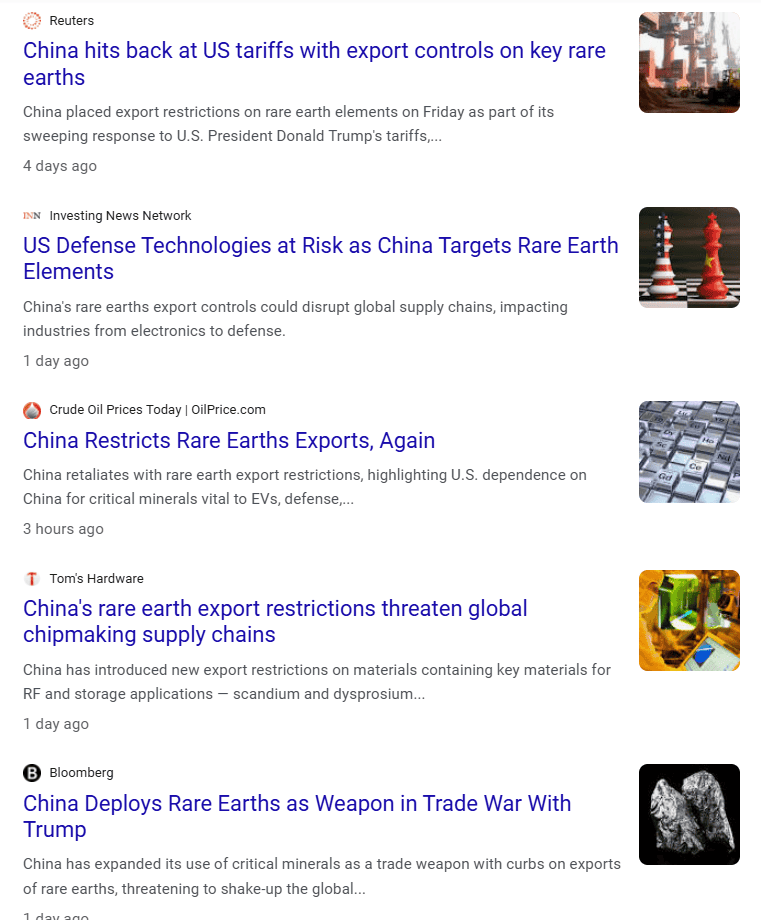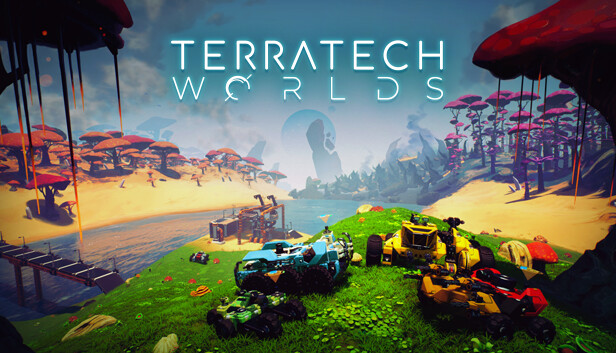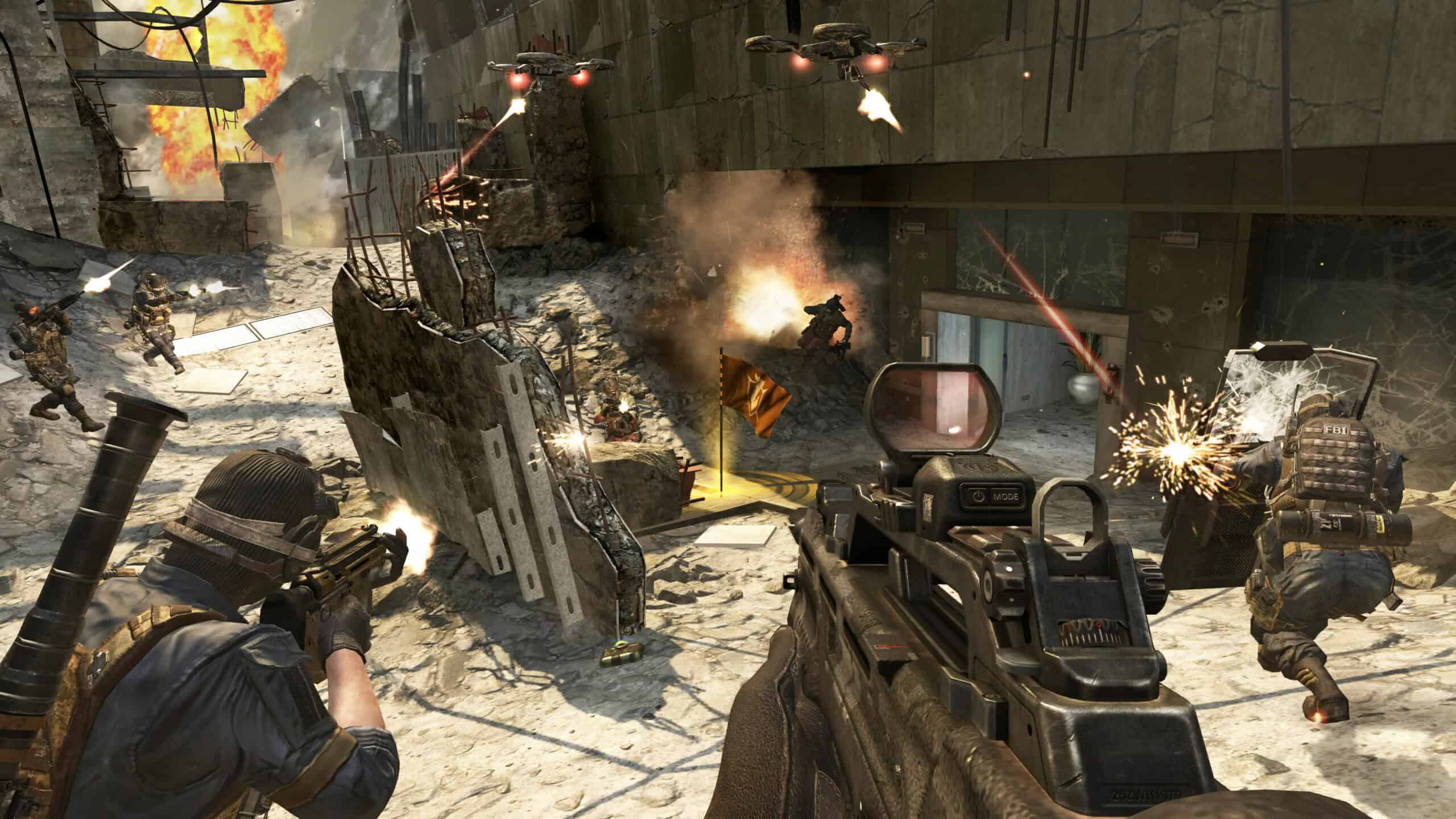Call of Duty: Black Ops II is experiencing an unexpected resurgence, not due to its multiplayer gameplay, but because its storyline bears striking similarities to current global events. The game, released in 2012, envisioned a Second Cold War unfolding in 2025, driven by competition over rare earth metals between the United States and China.
Fast forward to today, and real-world headlines about trade wars, tariffs, and mineral embargoes resemble plot points from the game. Both gamers and geopolitical observers are taking notice as the lines between fiction and reality start to blur. It’s almost as if the writers of Black Ops II had a crystal ball. Social media is buzzing with memes portraying the idea that “2025 in the game equals 2025 in real life.”
Read this summary of the game from Fandom and see if you can draw any parallels to today:
Three decades later, Menendez re-emerges as the leader of Cordis Die, a massive populist movement with over two billion followers. He stages a cyberattack that cripples the Chinese Stock Exchange; in response, the Chinese ban the export of rare earth elements, fermenting the start of a new Cold War between the Chinese-led Strategic Defense Coalition (SDC) and the U.S.-led NATO. Taking advantage of this stand-off, Menendez attempts to bring the two powers to a full-blown war by inciting conflicts between the two, secretly aiding SDC leader Chairman Tian Zhao, who worked with Mason and Woods during their operation in Afghanistan in 1986. Using the intelligence provided by Woods, David, now a Navy SEAL Commander code-named Section, leads JSOC forces in the renewed search for Menendez.
Source: Fandom
For clarity, you can see some of the headlines that are trending today about this topic:

Black Ops II’s Second Cold War Plot Mirrors Today
In Black Ops II’s campaign, a series of crises push the U.S. and China to the brink. After a massive cyberattack cripples the Chinese stock market in 2018, Beijing bans the export of rare earth elements, igniting a new Cold War with the West. The game’s villain – Raúl Menendez, a charismatic populist leading a movement called Cordis Die – has 2 billion followers and is hell-bent on pitting the superpowers against each other for his own ends. The result? A high-tech standoff over resources, with rare earth metals (the unsung heroes of modern tech) at the center of the conflict. Back in 2012 this plot seemed like entertaining fantasy. A resource war over obscure minerals? Sure, it was a cool twist for an FPS campaign. But nobody actually expected drones over L.A. and a minerals embargo showdown in real 2025 – except that’s exactly what’s brewing now (minus the attack drones, thankfully).

The game highlighted how vital rare earth metals are – mentioning China’s near-monopoly on these elements and how cutting off supply could spark global turmoil. Players didn’t need a geology degree to get the stakes: these minerals (with futuristic-sounding names like dysprosium and gadolinium) power everything from drones to smartphones. The idea of China leveraging its mineral dominance was central to Black Ops II’s narrative, and at the time it added a realistic edge to the sci-fi action. As one industry expert once said, “Rare earths are in many ways the oxygen of our high-tech society” – cut them off, and modern life (or at least modern military tech) starts gasping.
Fast forward to this week, and life is imitating art a little too well.
Real-World Rare Earth Rumbles in 2025
Here in April 2025, the U.S. and China are indeed skirmishing over rare earth elements – not with bullets, but with export bans and tariffs. Just days ago, Beijing announced new export controls on heavy rare earth metals, squeezing the supply of elements crucial for weapons, electric cars, and gadgets. The controls cover things like rare earth magnets and specialized minerals that U.S. tech and defense firms can’t easily replace. Analysts immediately warned this was China’s opening gambit in a high-stakes game: they picked the things that are crucial for the U.S. economy. Another analyst observed that now there’s a scramble for access to the limited sources of alternative supply outside China – a real-world echo of the game’s resource scramble narrative.
This real trade crossfire didn’t come out of the blue. It escalated after the U.S. hiked tariffs on Chinese goods to 54%, prompting China’s retaliation. And remember those esoteric metals gallium and germanium that your chemistry teacher probably skipped? China put the squeeze on those too. In fact, at the end of last year China outright banned exports of gallium and germanium to the U.S. – metals you’ve perhaps never heard of, but which are vital for semiconductors, night-vision goggles, and solar panels. This “minerals chess match” has become so pointed that one mining CEO likened China’s strategy to a tactical strike. He warned that a new “material cold war” might be starting – fought not with tanks, but with export licenses and embargoes. Sounds familiar? It’s basically the Black Ops plot minus the shooting.
Policymakers in Washington are certainly not treating this like a game. A White House spokesperson responded to China’s rare earth curbs by stressing the need to “de-risk and diversify” supply chains away from Beijing – diplospeak for “we need other sources ASAP.” Meanwhile, China’s state media insists these measures are about national security, not an economic ambush. In Black Ops II, China’s rare earth embargo was retaliation for a cyberattack – in reality, it’s retaliating for trade restrictions. Different trigger, similar result.
Geopolitics aside, the net effect is a bit surreal: we have world leaders essentially reenacting a video game subplot about rare metals. Prices for some of these materials are spiking, defense contractors are sweating about supply chains, and trade officials are using phrases like “strategic dominance” that wouldn’t sound out of place in a mission briefing voiceover. One consultant even called this “an iterative game of negotiation with the U.S.” – a game of negotiation, indeed.
Memes, Tweets, and “Did Black Ops II Predict This?!”
On social media, gamers are having a field day. Clips from Black Ops II’s campaign – like a Chinese news announcer declaring the rare earth ban – are circulating with captions like “when Call of Duty plots become the nightly news.” A decade-old Reddit thread joking about Black Ops II’s future predictions has been resurrected, now filled with “I told you so” energy. Back in 2012, people chuckled at the idea of wars over elements like neodymium; in 2025, nobody’s laughing as those very elements become bargaining chips between superpowers.
Meme-makers are comparing Black Ops II cutscenes to actual 2025 news footage: picture split-screen images of the game’s fictional U.S.–China stand-off next to real presidents and trade ministers at press conferences. One popular quip online: “Activision really out here writing 2025’s script.” On Twitter (or X, as it’s now known), users are tagging the game’s writers, half-jokingly asking for stock tips or lottery numbers since they seemingly predicted the future. A few cheeky posts even suggest that maybe Washington and Beijing should dust off an Xbox and play through Black Ops II for clues on what not to do next. The humor might be tongue-in-cheek, but it highlights an uncomfortable truth – the game’s plot hit a little too close to home.
Even the Call of Duty developers are getting a retroactive salute. Gamers are praising Black Ops II for its “surprisingly accurate” vision of 2025, noting how it nailed concepts like cyber warfare, drone tech, and resource conflicts. Sure, not everything came true (no army of walking robot dogs… yet), but the rare earths angle has aged like fine wine. A flurry of TikTok videos show people revisiting the game, saying things like “POV: you’re playing 2025 in 2025,” while pretending to be trade negotiators instead of soldiers. It’s all in good fun, injecting some levity into complex trade issues through the universal language of memes. And who knows – maybe a few younger folks are learning about gallium and dysprosium via gaming, which might be the coolest chemistry lesson ever.
When Fiction and Reality Collide
What do we make of this weird convergence of pop culture and geopolitics? On one hand, it’s a reminder that fiction can be prescient. Black Ops II didn’t cause the rare earth rivalry, of course, but it tapped into real-world trends early. Game writers worked with military advisers and sniffed out a plausible future conflict over tech minerals – and they weren’t far off. Sometimes today’s imagination becomes tomorrow’s reality, especially when the fiction is rooted in real economics and technology. It’s equal parts fascinating and unsettling to see a game scenario play out in news headlines. As the saying goes, “life imitates art,” and here we are living a plotline that once seemed like sci-fi.
On the other hand, this convergence highlights how entertainment and awareness can intersect. Gamers who remember the rare-earths plot are now watching policy debates with a knowing sense of déjà vu. The line “rare earths will not cause a US-China cold war” from a 2012 pundit now feels more like a challenge than a certainty. If nothing else, these parallels have people talking – about supply chains, resource security, and why tiny elements on the periodic table suddenly matter. That’s a win for public awareness (if a slightly ironic one).
Finally, there’s a silver lining of humor. By keeping the tone light – with jokes about Nostradamus-level game design – folks can digest the gravity of global trade issues without dozing off. A meme might make you chuckle, but also think: “Wait, is this actually happening?” And indeed it is. We’re essentially in a high-tech Cold War, fought with mines and modems instead of missiles. Black Ops II just got the head start in depicting it.
As we watch this rare earths saga unfold, one can’t help but wonder what other video game plots might sneak into reality. (Let’s pray the zombie modes stay fiction!) In the meantime, the Black Ops II case shows that sometimes the gap between pixelated fiction and worldly truth is thinner than we think. It’s equal parts entertaining and thought-provoking – a reminder to take even our play seriously, because every so often, the “villain’s plan” from a decade-old game might end up on a diplomat’s desk.
In 2025, fiction and reality are doing a strange tango. If Raul Menendez could see it, he’d probably smirk – after all, Cordis Die means “Heart Day” in Latin, and he did win the hearts (and minds) of billions in-game. Let’s just hope our real 2025 doesn’t give him any more reasons to say “I told you so.” In the meantime, keep one eye on the news and one on your old game library; you never know when a plot might level up into real life. Sometimes, the best way to understand the present is to play an boots-on-the-ground soldier in a decade-old video game. Crazy? Yes. But as 2025 is proving, not impossible.
So here’s to Black Ops II – the unlikely soothsayer of the rare earths trade war – and to keeping our sense of humor as we navigate a world that’s starting to feel like a live-action geopolitical DLC. Game on, reality. Game on.







